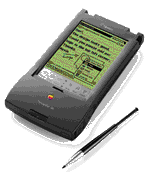|
Week 1 September 11
|
Introductions, Course design, assignments and expectations
for next class meeting:
purchase texts from bookstore
explore ‘Multimedia: from Wagner to Virtual Reality’
www.artmuseum.net
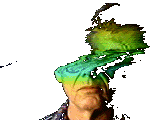
and TimeStream: A History of Media “the first work of net art commissioned by New York's
Museum of Modern Art -- allows visitors to explore such
varied topics as ancient Egyptian modes of communication,
the camera obscura, cathode-ray tubes, and X-ray devices
-- a loose history of media.”
|
|
September 18
|
Rosh Hashanah – no classes
|
|
Week 2 September 25
|
Centre-less texts and multivocality? : Convergences
Derrida, Bakhtin, Barthes.
Reading: Landow, Hypertext , chapter 1 and 2
Explore
the following website: Ars
Electronica “considered one of the world's premier showcases
of new media art. This year's theme is "Takeover: Who's
Doing the Art of Tomorrow."
"'One
never sees a new art,' someone once wrote about new media.
'A 'new art,' may be recognized by the fact that it is not
recognized.' And so the story goes with the Ars Electronica
Festival, an annual celebration of all things new in the
field of art and technology, some easy to recognize and
others not so."
Alex Galloway's 'Rhizome'
commentary on Ars Electronica 2001.
Recommended
additional reading:
Bakhtin Problems of Dostoevsky's Poetics, xxxi ix,
5 46, and The Dialogic Imagination "Introduction"
|
|
Week 3 October 2nd
|
Self
and Author
Landow
chapter 3 and 4
Foucault, "Authors and Writers" (I will bring
copies to class)
Barthes, "What is an Author?" (I will bring copies
to class)
from last week: Barthes, Pleasure in the text (the onine excerpt I intended
to assign is no longer available. Please read this short
secondary text instead.
Enrichment: read a bit *about* Barthes' text, here
|
|
Week 4 October 9th
|
Collagist
practices of knowledge
Digital Dialectic ch 8 “Hypertext as Collage-Writing”
(Landow)

Christy Sheffield
Red
Mona

Critical
Art Ensemble “Utopian Plagiarism, Hypertextuality and Electronic
Cultural production” (kit)
|
|
Week 5 October 16th
|
Memory I: personification
Bush,
"As
We May Think"
Vanevar Bush, "Memex Revisited"
Manovich, "Database
as a Symbolic Form" (online)
First mini assignment
due 5%
Lab:
Discuss/show mini-assignments
|
|
Week 6 October 23rd
|
Memory 2: Mnemonic systems
and the archive
Walter
Benjamin Arcades Project (online
translation)
Victor Burgin ”the city in pieces” (kit)
cdrom: Michele Schauff memory media (view in class)
Apartment:
“Apartment is inspired by the idea of the memory palace.
In a mnemonic technique from a pre-Post-It era, Cicero imagined
inscribing the themes of a speech on a suite of rooms in
a villa, and then reciting that speech by mentally walking
from space to space. Establishing an equivalence between
language and space, Apartment connects the written word
with different forms of spatial configurations.”
http://turbulence.org/Works/apartment/index.html
Suggested: Jacques Derrida, "Archive Fever," diacritics
25: 2 (Summer 1995)
Tentative meeting at the culture of cities project, downtown.
|
|
Week 7 October 30th
|
Rhizomatic spaces: Gilles Deleuze and Felix Guattari
Reading:
Deleuze
and Guattari, Plateaus (just a few quoatations
from the introduction, online)
"A
Thousand Plateaus is a difficult but rewarding book of radical
philosophy — one of the most influential of the late Twentieth
Century. While not concerned with new media technology (the
book was first published in 1980), Deleuze and Guattari
clearly forecast the direction of postmodern techno-culture,
innovating several key philosophical concepts from the Internet-like
rhizome to the ever shifting territories of the nomad. Translator
Brian Massumi offers some advice: "This is a book that speaks
of many things, of ticks and quilts and fuzzy subsets and
noology and political economy... The best way of all to
approach the book is to read it as a challenge: to pry open
the vacant spaces that would enable you to build your life
and those of the people around you into a plateau of intensity..."
Moulthrop "Rhizome and Resistance: Hypertext and the
Dreams of a New Culture" (online)
Hakim
Bey “TAZ" (online)
visit Rhizome.org
|
|
Week 8 November 6
|
Locating ourselves in space
and place
Digital
Dialectic ch 6 “Replacing Place” ( Mitchell)
Cato “City Image,
narrative and interaction design”
browse:
City
of Bits
(online -- read the synopsis and browse)
City
Sites: an electronic book, multimedia essays on New York
and Chicago,
1870-1939
at: http://www.citysites.org.uk
Brooklyn: http://www.bkyn.com
Home: “Home is an
interactive, navigable virtual-reality environment that
explores ideas about swelling and its relation to the psyche.
In it, a house abandoned by its owners, is up for sale.
Half-empty spaces still reverberate with memories and the
most private moments of its previous inhabitants. Deceptively
normal looking from the outside, once inside, spaces stretch
and break apart and walls fall away, leaving only a small
plateau hanging in emptiness, resounding with the lives
and voices of those who still haunt it.”
http://www.evl.uic.edu/research/template_res_project.php3?indi=202
for this class we’ll be meeting at the
culture of cities offices downtown (Bathurst Subway station).
Details to follow.
|
|
Week 9 November 13
|
Interfaces
Digital
Dialectic ch 4 “The Condition of Virtuality” (N. Kathryn
Hayles)
“Is
new media art circumscribed by commercial software packages?
Are the prevailing conventions for user interfaces
another example of American cultural imperialism? Artist-programmer
John Simon talks with Robert Atkins.” <http://www.mediachannel.org/arts/perspectives/simon/front.shtml>
A variety of interfaces and browsers will
be made available via the course webpage – feel free to
send your favourites to the listserv so I can add them!
netomat
alt.interface
"Alt.interface is an
artist's series designed to encourage new and challenging
work from new media artists. Alt.interface focuses on "interface
artworks" that overlay Rhizome.org's online databases of
text and art. These interfaces provide visual ways to navigate
and/or access the database and its content. They are among
the purest representations of the intersection of art and
technology and exemplify the provocative work being created
with digital media."
Every Image ALEX GALLOWAY
Every Image is a screen saver viewable from
your computer desktop. It draws upon the hundreds of items
in the Rhizome archive to create a slide show of images
and text.
Spiral MARTIN WATTENBERG
Spiral also shows items in the Rhizome archive,
but organizes them chronologically into a three-dimensional
spiral timeline. Use the interface to fly forward and backward
in time.
StarryNight ALEX GALLOWAY & MARK TRIBE
with MARTIN WATTENBERG
StarryNight is a interface for viewing and
browsing information in the Rhizome archive. Each item in
our archive is represented by a star. Use the star constellations
to follow your interests through the archive.
no longer required:
Walker
"Through the Looking Glass" (online)
|
|
Week 10 November 20
|
gender and difference
Page
- "Restive
Text"
Guertin, Queen
Bees And The Hum Of The Hive"
Dyer “The Rhetoric and Aesthetics of Feminist Hypertextual Literature”
Suggested:
if you don’t know the story of Scheherazade, you’ll
miss the intertext of Page’s piece. Check it out, here:
Thousand and One Nights
Translation: Lane, Edward William Date: c1200 Book:
Introduction (online)
|
|
Week 11 November 27
|
Cyborg-Feminists and Writing the Body.
Haraway, “Cyborg
Manifesto”
Amerika, "Stitch
Bitch: The Hypertext Author As Cyborg-Femme Narrator."
Jackson “My body a Wunderkammer"
explore:
studio xx: http://www.studioxx.org/
Suggested: Jackson “Patchwork Girl”
Riding the Meridian: Women and Technology issue
Second mini-assignment on cities due 10%
|
|
Week 1 2 December 4th – last class of the term for this class
|
We will meet at 10:30 for
one hour only. ***No classes or exams can be held between 11:30
am and 1:30 pm on December 4th, Women's Remembrance
Day.
Reading journal/portfolio due.
|
|
Last day of undergraduate classes is December
5th.
|
|
Week 13 January 8th
|
Image and text

Semiotics
for Beginners
website : "we seem as a species to be driven by
a desire to make meanings: above all, we are surely Homo
significans - meaning makers. And it is this meaning-making
which is at the heart of the concerns of semiotics."
Bernstein, Charles. "An Mosaic
for Convergence." in Electronic
Book Review
6 image and narrative (1) (1997).
Scott
McCloud website
Mitchell, William J. "Intention and Artifice" "How to Do
Things with Pictures".
McCloud
website http://www.scottmccloud.com
Crossfade: Sound Art Online
“Sponsored
by the world's major supporters of new media art -- the
San Francisco Museum of Modern Art, the Goethe-Institut,
ZKM (Center for Art and Media, Karlsruhe, Germany) and the
Walker Art Center (Minneapolis) -- "Crossfade"
is a series of commissioned "media essays." They
can take any form that can possibly be presented online,
ranging from hyperlinked text to musical compositions that
incorporate the network as an instrument.”
Suggested:
Imagologies,
McCloud Understanding Comics,
Tolva, Ut Pictura Hyperpoesis

|
|
Week 14 January 15
|
Simulation. authenticity and
aura
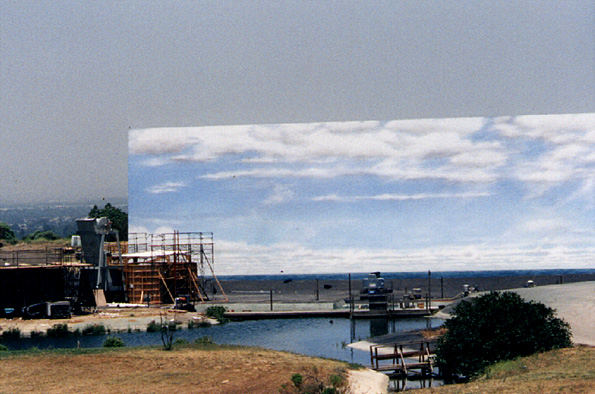
Benjamin
The Work
of Art in the Age of mechanical Reproduction (online)
Julian
H. Scaff Art and Authenticity in the Age of Digital Reproduction
web art: Michael Mandiberg. “This conceptual work of net
art forces us to question how we choose to value an image
-- or not.” http://www.aftersherrielevine.com
no longer required:
Lurence Rinder “Art in the Digital Age” (online)
“the
work of art in the
age of post-mechanical reproduction” (online)
|
|
Week 15 January
22
|
postcolonial

Jaishree
Odin: The Edge of Difference: Negotiations Between the Hypertextual and the
Postcolonial
Arnold, "Feminist
Poetics and Cybercolonisation" (kit)
Film:
Reassemblage: from the firelight to the screen Trinh
T. Minh-ha
Web:
Hacking the Border <www.borderhack.org
Final Project Proposal due
|
|
Week 16 January
29
|
filmic
II: Cinema and Digital Media
Digital Dialectic ch 9 “What is Digital Cinema?” (Manovich),
Hyperbole Studios Online
Lumiere Festival
of Interactive Film and Storytelling
Film: Marker, La
Jetée
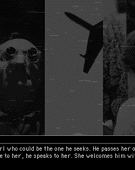
|
An Example of a Recent Trend...
One fresh trend that's forming in net art is the website dedicated to reinterpreting
a film. An example: "The Jetty," by Hidekazu Minami,
a New York-based visual artist and interactive designer.
Based on "La Jette," by Chris Marker, Minami's site
articulates the chronological events experienced by
the characters in Marker's film. Some of the events
are related at the same time, so multiple characters'
points of view are seen at once, offering site visitors
a poetic synopsis of the film. "The Jetty" has most
recently been exhibited at the Museum of Image and Sound
in Sao Paulo, Brazil.
http://www.thejetty.org
from rhizome.org
|
Wigged.net
is a webzine that is focused on bringing innovative short
videos, animations and live performances over the
internet and is a leader
in interactive film development
and distribution.
http://hypertext.rmit.edu.au/vog/
remediation
website:
intro video clip
(reprise)
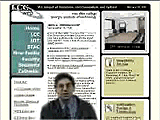
explore:
interactive cinema research at MIT

|
|
Week 1 7 february 5th
|
Ergodic texts and games
Aarseth Cybertext: Perspectives on Ergodic Literature ch1 (kit)
“Art
World Starts to Pay Attention to Video Games” (online)
browse
Gamestudies “the first academic journal dedicated to interdisciplinary
computer game research” www.gamestudies.org.
"Game Show" focuses on artist-created games made in the
1990s. http://www.massmoca.org
|
|
Last day to drop F/W courses is February
8th. Reading week is February 11-15th.
|
|
Week 18 February 19th
|
data surveillance and the digital panopticon

Lyon, David. "From Big Brother
to the Electronic Panopticon" (online)
Robins and Webster, "Cybernetic
Capitalism" (online)
Wexelblat, Alan. "How
is the NII Like a Prison?" (online)
Recommended
reading
Gandy Jr., Oscar H. "It's Discrimination, Stupid!"
in Resisting the Virtual Life
Gandy Jr., Oscar H. "Operating the Panoptic Sort"
Poster, Mark. "Foucault and Data Bases" in The
Mode of Information
Herold, “Game
Theory: Tracking an Elusive Film Game Online” (online)
|
|
Week 19 February 26th
|
The Act of Reading, Active Reading.

Digital Dialectic
ch 7 “The Medium is the Memory” (Florian Brody)
Burbules, N. "Rhetorics
of the Web: Hyperreading and Critical Literacy"
Douglas “Gaps,
maps and perception: what readers don’t do” (online)
|
|
Week 20 March 5th
|
Libraries of Babel
and the semantic web
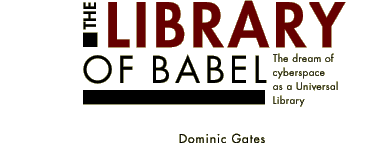
Borges
Web Resources “Library
of Babel”
Namjoshi: “Building
Babels” (kit)
The Babel website “creates a shared 3-D data space (among
all who log onto the site simultaneously) that disintegrates
into an indecipherable landscape. Ultimately, the jumble
of colorful numbers serves as a poetic metaphor for the
endless amounts of information available online.” <http://hosted.simonbiggs.easynet.co.uk/babel/babel.htm>
|
|
Week 21 March 12th
|
Handheld and ubiquitous
BeeHive
Microtitles : “Microtitles
Series 1 is a collection of short titles in PDF, specially
formatted for your PDA. These titles can be read on
the Palm Pilot using the new Adobe Acrobat Reader for the
Palm OS.” (online)
Online Show Examines PDA, Wireless Art www.voyd.com/ia
"Palm
Rants," a series of Web and PDA-based performances.
http://artnetweb.com/gh
|
|
Week 22 March 19th
|
Agents and collaborators
Lenny Foner, "Entertaining Agents"
File Sharing for Artists
“There's been so much hype in the past touting the Web's potential for
true interactivity and creative exchange. But how easy has
it been for artists of all media to access and share digital
work online <http://www.ivystone.com/arss>
Explore
the agents at the MIT media lab

|
|
Week 23 March 26th
|
Art
without Borders
”In
a time when the image of earth is a satellite photo from
outside our atmosphere, our idea of ourselves changes daily.
Can culture actually exist without a locality? If it can,
what kind of culture will it be? Does art depend on a community
of artists supported in a real community of which they are
a part? What is the role of the artist in a world connected
without regard to time or space? “
http://radio.cbc.ca/programs/ideas/transcripts/alphabet.html
This
show “features a time-line tracing the evolution of creative
uses of the global communications network by artists dating
back to the 1920s and up to the 21st century.”
<Http://telematic.walkerart.org/>
Reading journal/portfolio due
|
|
Week 24 April 2nd
|
Tying it all together?
Digital Dialectic ch 5
“From Cybernation to Interaction: A Contribution to an Archeology
of Interactivity” (Huhtamo)

Final Projects Due. Students will discuss and present their final
projects in class.
|
|
Last day of undergraduate classes is April
5th. There
will be no final exam for this class.
|




![]() Parts
of this syllabus are indebted to or from the work of Gregory Ulmer, University
of Florida,
Parts
of this syllabus are indebted to or from the work of Gregory Ulmer, University
of Florida, 












